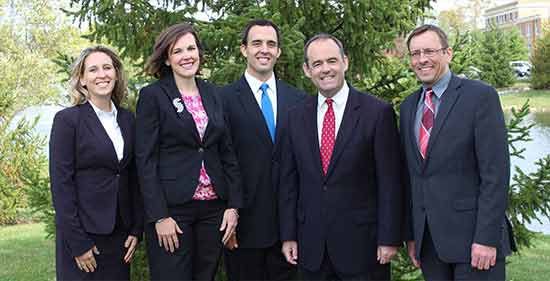As many of our readers know, Ohio recently enacted a “Stand Your Ground” law and a “Constitutional Carry” law. While these laws were major changes, and arguably bigger changes than most recent gun laws, there have been other notable laws recently regarding firearms in Ohio. Back in June of 2022, Ohio’s Governor signed House Bill 99, which will impact the legal process for authorizing individuals to carry weapons in a school zone.

Previous/Current Versions of Laws Addressed in HB99
Among other things, HB99 lays out some rules, similar to rules already in the Ohio Revised Code (ORC). Section 2923.122, for example, does say that governing bodies for educational institutions can authorize individuals to carry a weapon on school grounds if they meet certain requirements. However, these requirements have been subject to some changes in recent years. There has been a question on how much training is required when it comes to the authorization of individuals other than security guards to carry weapons in a school zone. After a recent Ohio Supreme Court case, it was understood that the amount of training required to become a security guard at a school was similar to the training required to authorize anyone else. Considering that the safety officer at a school must have a certificate of completion from a basic peace officer training course and/or twenty years of active duty police work, not many people were eligible to be authorized by the school board to carry weapons. While ORC Section 2923.122 does provide school boards with the ability to give written authorization to carry weapons, the training requirements made that provision rather impractical.
What is New in HB99?
To deal with this issue, Ohio’s HB99 creates the Ohio safety and crisis center and establishes a mobile training team, tasked with operating the center and developing the training curriculum that an individual would need to complete in order to obtain authorization from their school board to convey deadly weapons. While the mobile team is tasked with developing the curriculum, the ORC does provide some guidelines for the training. These guidelines include:
- Initial instruction and training, which shall not exceed twenty-four hours
- Annual requalification training, which shall not exceed eight hours
According to HB 99, the curriculum will include training in:
- Mitigation techniques
- Communications capabilities and coordination and collaboration techniques
- Neutralization of potential threats and active shooters
- Accountability
- Reunification
- Psychology of critical incidents
- De-escalation techniques
- Crisis intervention
- Trauma and first aid care
- The history and pattern of school shootings
- Tactics of responding to critical incidents in schools
- At least four hours of training in scenario-based or simulated training exercises
- Completion of tactical firearms training
- Realistic urban training
Conclusion
The efforts of the Ohio government to handle safety in schools has been an ongoing effort, and there may be more changes to come. Clarifications and updates are sometimes needed rather than drastic changes to existing laws. Regardless, staying up to date on Ohio is smart for citizens of Ohio. If you need legal help or advice, as always, feel free to contact Dearie, Fischer, and Martinson.

